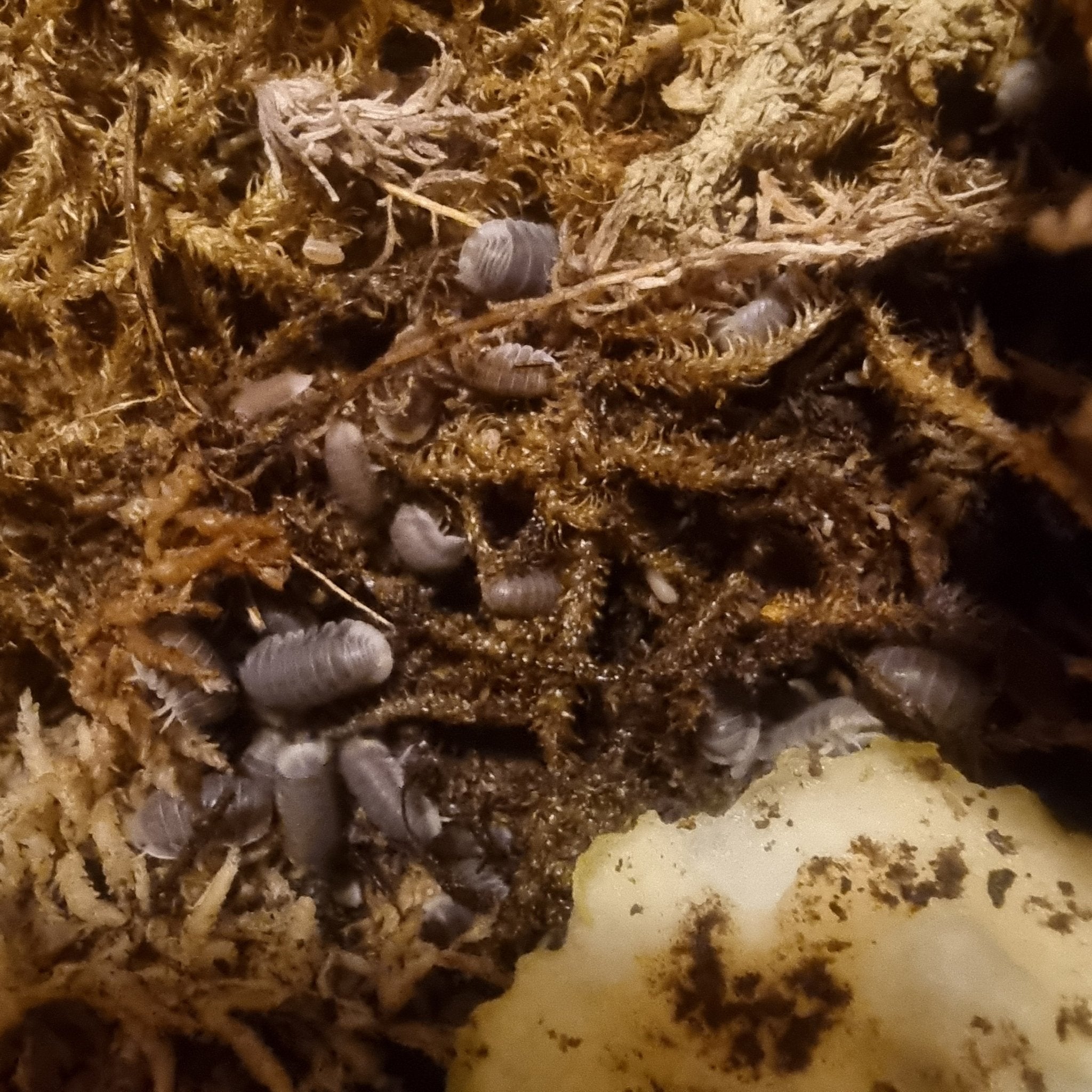Isopods, or pill bugs, are a fascinating group of crustaceans that have evolved over millions of years to occupy a variety of niches. While most people are familiar with at least one type of isopod, for example, the common pill bug that can be found in gardens and parks around the world, there are actually over 10,000 different species of isopods, each with their own unique characteristics.
One group of isopods that has recently gained popularity among invertebrate enthusiasts are the Cubaris sp. These isopods are known for their striking colouration, their unusual body shape, and their ability to thrive in a range of different environments.
What are Cubaris sp. Isopods?
Cubaris sp. isopods, , are a small group of isopods that are native to Southeast Asia. Unlike many other types of isopods, which can be found in a variety of different environments, Cubaris sp. isopods are typically found in leaf litter and other decaying organic matter.
One thing that sets Cubaris sp. isopods apart from other isopods is their distinctive shape. While most isopods are fairly round or oval-shaped, Cubaris sp. isopods are more long and slender. This gives them a somewhat snake-like appearance, which is further enhanced by their bright, contrasting coloration.
Cubaris sp. isopods can be found in a range of colours, from pure white to bright orange or even pink. Some species may also have spots or stripes on their bodies, making each individual isopod unique.
Types of Cubaris sp. Isopods
There are several different types of Cubaris sp. isopods, each with their own unique characteristics. Some of the most popular types include:
- Cubaris murina – This is one of the most common types of Cubaris sp. isopods. They are usually white or light grey in colour, with a somewhat translucent appearance.
- Cubaris sp. “Christmas” – This isopod gets its name from its bright red and green coloration, which is reminiscent of Christmas colours.
- Cubaris sp. “Rubber Ducky” – This isopod is named for its bright yellow coloration, which makes it look like a rubber duck. It also has small, black dots on its body.
- Cubaris sp. “Philadelphia” – This isopod is named for the city where it was first discovered – Philadelphia, Pennsylvania. It has a mottled brown and tan coloration, with small white spots on its legs.
- Cubaris sp. “Sulawesi” – This isopod is native to the island of Sulawesi in Indonesia. It is bright orange in colour, with black spots on its body.
These are just a few of the different types of Cubaris sp. isopods that you may come across. There are many other types out there, each with their own unique characteristics and quirks.
Caring for Cubaris sp. Isopods
If you’re interested in keeping Cubaris sp. isopods as pets, it’s important to understand how to care for them properly. While they can be fairly low-maintenance compared to other types of invertebrates, they still require some basic care to thrive.
Here are some tips for caring for Cubaris sp. isopods:
- Housing – Cubaris sp. isopods can be housed in a variety of different types of containers, including plastic tubs, glass aquariums, or even specially-designed isopod terrariums. They prefer moderate humidity levels and a temperature range of around 70-80°F.
- Substrate – Because Cubaris sp. isopods are burrowing creatures, they require a substrate that allows them to dig and tunnel. A mix of coconut coir, sphagnum moss, and leaf litter is a good choice. The substrate should be kept moist but not overly wet.
- Food – Cubaris sp. isopods are scavengers, which means they will eat just about anything organic. This includes decaying plant matter, fruits and vegetables, and even dead insects. It’s important to provide them with a varied diet to ensure they are getting all of the nutrients they need.
- Water – While Cubaris sp. isopods don’t require a standing water source, they do need access to moisture. This can be provided through misting the enclosure regularly or by providing a humid hide.
Breeding Cubaris sp. Isopods
Breeding Cubaris sp. isopods is fairly straightforward, but it does require some patience and attention to detail. Here are some tips for breeding these fascinating creatures:
- Provide a healthy environment – In order for Cubaris sp. isopods to breed, they need to be in good health. This means providing them with a clean and well-maintained enclosure, as well as a varied and nutritious diet.
- Monitor conditions – Cubaris sp. isopods breed best when conditions are optimal. This means maintaining a temperature range around 70-80°F, and keeping the enclosure moist but not overly wet.
- Wait for reproduction – Once your Cubaris sp. isopods are healthy and conditions are good, you should start to see them breeding on their own. Females will carry their eggs in a special brood pouch on their underside until the eggs hatch.
- Feed and care for hatchlings – When the eggs hatch, you will need to provide the hatchlings with small, soft pieces of food, as they are not yet able to eat harder materials. You should also take care to keep their enclosure humid to prevent dehydration.
So why not check some Cubaris sp. Isopods out in our store – you won’t be disappointed!









